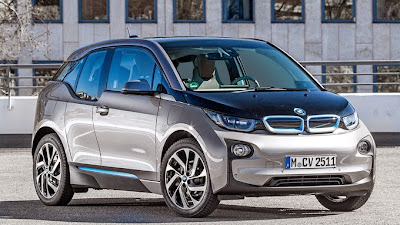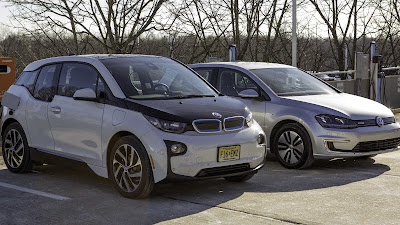BMW have embarked on a radical engineering overhaul which could see all future models from the 3-series upwards, including the Rolls-Royce range, become all-wheel-drive range-extender electric cars.
The days of spot-welded steel bodies and engines that drive the rear wheels via conventional transmissions are set to be consigned to history. BMW’s plan to make all of its cars from the 3-series upwards plug-in hybrids has forced the company’s engineers to rethink the make-up of its cars from first principles.
The first move is to radically reduce the weight of future bodyshells to help offset the extra weight of battery packs. Work on BMW’s bodyshell of the future is already well advanced, and the first generation of the mixed-materials structure will be seen this coming summer, underpinning the next-generation 7-series.
It is expected to take another generation of the 3-series, expected in 2018, before BMW is ready to switch its mainstream car to this kind of carbonfibre-intensive construction. That’s partly because it will take some years to reduce the cost of this kind of construction.
The next phase in BMW's reengineering is a rethink of the powertrain. The final concept — demonstrated in Nov 2014 with a 500 kw AWD 5-series GT xDrive plug-in hybrid — is similar in basic principle to the series hybrid system that propels the Chevrolet Volt.
Where the Chevy Volt has an ICE powered generator/motor + a traction motor in a single front-wheel-drive transverse gearbox assembly, BMW will retain it's famous rear-wheel-drive bias by splitting that combination and putting the main traction motor on the rear axle while the front axle can still be driven by the ICE powered motor/generator. This also means that on-demand four-wheel drive will be available on all future BMWs.
As seen in the BMW i8, a large battery will occupy the centre tunnel and some of the space usually occupied by the fuel tank. The front-mounted engine acts as a generator in most driving situations, creating electricity to help drive the electric motors.
The front electric motor is key to the new powertrain
In normal use, the front electric motor drives the front wheels via a still-secret new type of transmission. At speeds above 80 km/h or so, the engine ‘assists’ the electric motor by attaching itself to the new transmission via a mechanical planetary system to help drive the front wheels at motorway speeds in parallel mode much like a Chevy Volt or Mitsubishi Outlander PHEV. The combustion engine expected to be driving the front wheels only 10 per cent of the time on a typical journey.
BMW won’t reveal the details of this new combined electric motor and transmission system, but we speculate BMW, like Renault and Bugatti, may be considering a disc-shaped Axial Flux electric motor mounted within the gearbox housing.
The new transmission is unlikely to have more than three ratios and could be a mechanical planetary system. It is likely to be less expensive than today’s eight and nine-speed autos and dual-clutch transmissions.
Because the new-generation engine runs as a lean-burn generator for 90 per cent of the time and the twin electric motors provide significant torque, demands on the engine are much reduced. So it probably doesn’t need a turbocharger, the accompanying intercooler system or the Valvetronic system.
The emissions control system should also be less complex and expensive, all of which greatly reduces the cost of the unit. The engine is likely to be significantly lighter, too.
The battery pack can be larger. It will fit neatly in space freed up by the removal of the propshaft and the use of a smaller fuel tank. Braking assistance from electric motors means the mechanical brakes can be smaller, lighter and cheaper.
The multi-material bodyshell will be at least 100kg lighter than that of today’s 3-series, partly offsetting the battery’s weight.
This new hybrid powertrain offers part-time and permanent all-wheel drive and can be scaled across all models. So although the new, simplified generator motors might come in different sizes and capacities — and the battery pack will come in different sizes — this powertrain can largely be shared between everything from a 3-series to an X5 to a Rolls-Royce Phantom. This will save BMW a huge amount of money in production and research and development costs.
BMW is rumoured to already be testing a four-seater with some of the above technology. Weighing less than 1,200 kg with a drag co-efficient of 0.18, the BMW prototype consumes only 0.4 liters per 100 kilometers or 706 miles per imperial gallon (588 miles per US gallon).
Source: Autocar









